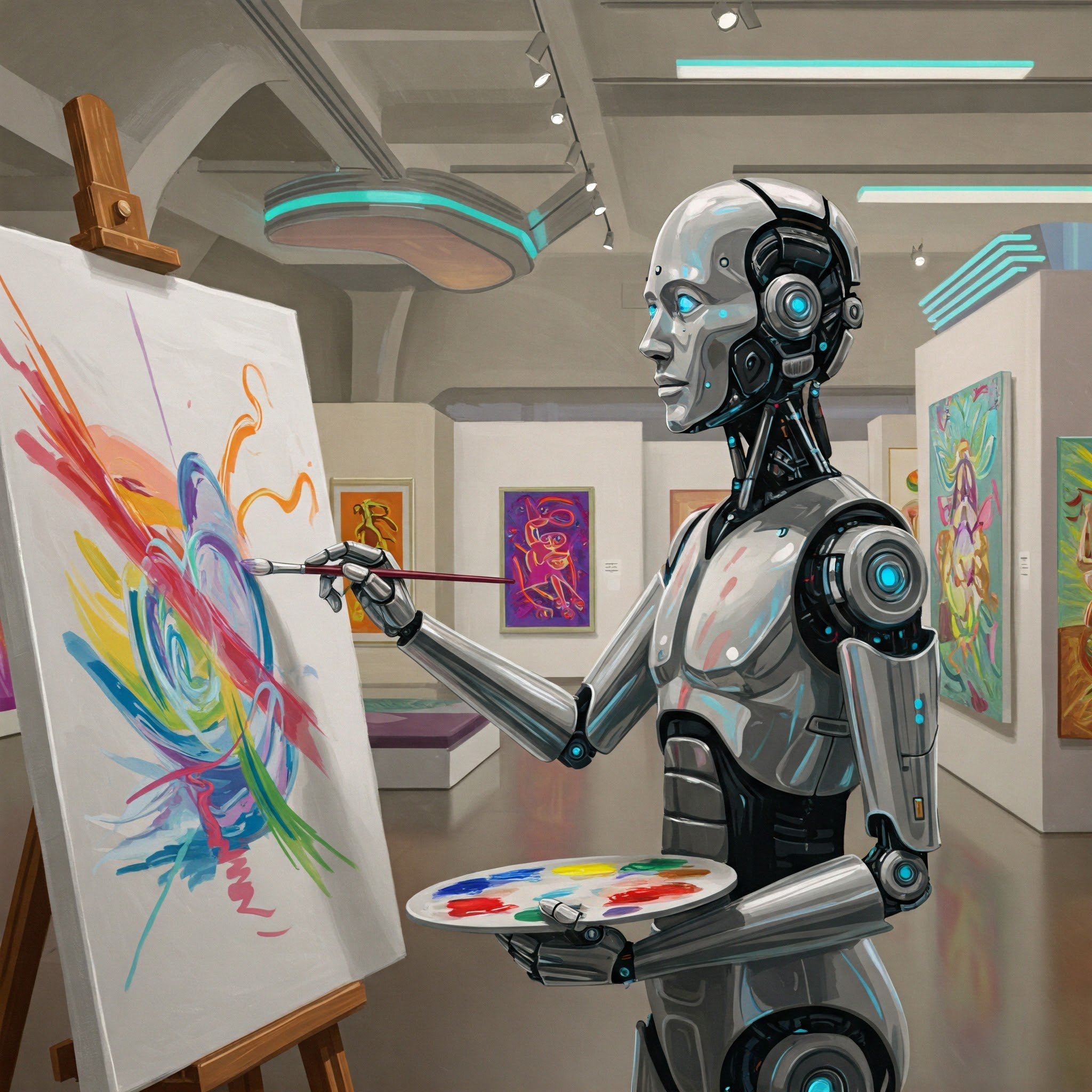AI and Creativity: Exploring the Potential of Generative AI in Art and Music
For Illustration purpose
he lines between human ingenuity and artificial intelligence are blurring, especially in the realm of creativity. We're witnessing a fascinating evolution as generative AI tools are transforming how we create art and music. Once considered solely the domain of human expression, these fields are now experiencing a surge of innovation driven by algorithms and neural networks. Let's delve into the exciting potential of generative AI in art and music, exploring its role and the implications for the future of creativity.
AI as a Creative Partner: Beyond Automation
It's crucial to understand that AI isn't simply automating creative tasks. It's becoming a collaborator, a partner that can:
Generate Novel Ideas: AI models trained on vast datasets of art and music can produce entirely new compositions, styles, and concepts that might never have occurred to a human artist.
Assist in the Creative Process: Artists and musicians can use AI tools to overcome creative blocks, experiment with new techniques, and explore uncharted territories.
Democratize Creativity: AI can lower the barriers to entry, enabling individuals with limited technical skills to express their creative visions.
AI in Visual Art: A New Era of Expression
Generative AI is revolutionizing visual art in numerous ways:
Image Generation: Tools like DALL-E 2, Midjourney, and Stable Diffusion can create stunning, photorealistic, and surreal images based on text prompts. This opens up possibilities for concept art, digital design, and even traditional painting.
Style Transfer: AI can transfer the style of one image to another, allowing artists to experiment with different aesthetics and create unique visual experiences. Imagine a photograph painted in the style of Van Gogh or a digital portrait rendered like a classic oil painting.
Generative Art: AI algorithms can create abstract and dynamic visual art pieces that evolve and change over time, offering a new dimension to artistic expression.
3D Modeling: AI is being used to generate 3D models and textures, accelerating the creation of virtual environments and characters for games, films, and virtual reality.
AI in Music: Harmonizing with Innovation
The impact of AI on music is equally profound:
Music Composition: AI can generate melodies, harmonies, and rhythms, creating original musical pieces in various genres. AI models can even learn to compose in the style of specific composers.
Sound Design: AI can create unique sound effects and textures, enhancing the sonic landscape of films, games, and music productions.
Music Production: AI tools can assist with tasks like mixing, mastering, and audio editing, streamlining the production process.
Personalized Music Experiences: AI can analyze listening habits and preferences to generate personalized playlists and even compose music tailored to individual tastes.
Instrument creation: AI is being used to create new digital instruments, and new ways of manipulating sound.
The Ethical and Philosophical Considerations
The rise of generative AI in creative fields also raises important ethical and philosophical questions:
Authorship and Ownership: Who owns the copyright to AI-generated art and music? Is it the AI developer, the user who provided the prompt, or the AI itself?
The Nature of Creativity: Does AI's ability to generate art and music diminish the value of human creativity? Or does it expand our understanding of what creativity means?
The Impact on Artists and Musicians: Will AI replace human artists and musicians, or will it become a valuable tool that enhances their creative potential?
Bias in AI: AI is trained on data, and if that data is biased, the AI will also be biased. This can lead to the creation of art and music that reflects and perpetuates existing inequalities.
Looking Ahead: A Future of Collaborative Creativity
The future of creativity likely involves a collaborative partnership between humans and AI. As AI tools become more sophisticated, they will continue to empower artists and musicians to explore new frontiers and push the boundaries of creative expression. Rather than fearing AI as a replacement, we should embrace its potential as a powerful tool for innovation and discovery.
The journey of AI in art and music is just beginning. As we continue to explore its capabilities, we're likely to witness even more groundbreaking advancements that will redefine the landscape of creativity.

